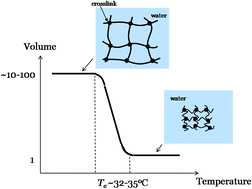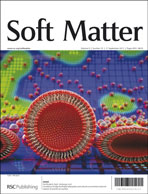Force and stroke of a hydrogel actuator
Abstract
Hydrogels that undergo a volume phase transition in response to an external stimulus are of great interest because of their possible use as actuator materials. The performance of an actuator material is normally characterized by its force–stroke curve, but little is known about the force–stroke behavior of hydrogels. We use the theory of the ideal elastomeric gel to predict the force–stroke curves of a temperature-sensitive hydrogel and introduce an experimental method for measuring the curve. The technique is applied to PNIPAm hydrogels with low cross-link densities. The maximum force generated by the hydrogel increases with increasing cross-link density, while the maximum stroke decreases. The force–stroke curves predicted by the theory of the ideal elastomeric gel are in very good agreement with the experimental curves.


 Please wait while we load your content...
Please wait while we load your content...